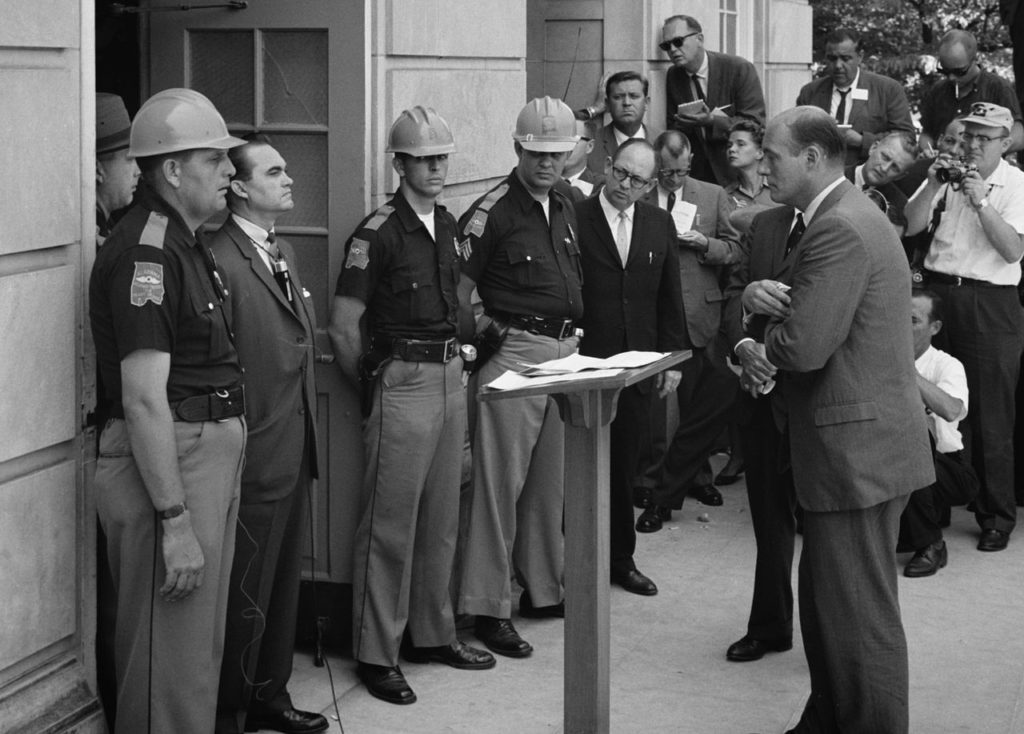
December 2, 2019; Chalkbeat
NPQ has been closely following the re-segregation of America’s schools. More than 50 years after the historic Supreme Court ruling which declared that separate schools can never be equal, early gains from integration in the 1950s and 1960s have increasingly been reversed. Disturbingly, it seems this is not just the result of integration being very hard to get right; rather, it appears to be the failure of the of the federal government to stand strongly behind the law of the land and make integration a priority.
Recently, Chalkbeat examined the fate of the most recent federal attempt to right this wrong. Near the end of his tenure, President Obama’s secretary of education, John King, helped launch a small program for desegregation. $12 million, a paltry sum, was allocated to help local districts research and develop their approaches to increasing the integration of their schools. (It might be worth noting that there are more than 50 million public school students in the United States). This followed earlier Obama administration guidance to school leaders stressing the need to target the ills of racial and economic segregation that plague many of our schools. The resources might have been meager, but at least there was a modicum of support for local leaders.
Thirty districts, big and small, answered the RFP, seeking financial help for their efforts to build districts in which all schools reflected an area’s overall population. But the change of administration stopped the effort in its tracks. Under President Trump and Secretary of Education Betsy DeVos, the program was cancelled.
US DoE spokesperson Angela Morabito explained her department’s rationale to Chalkbeat: “The program was an unwise use of tax dollars, and the funds could be used more effectively for other purposes.” For Secretary Betsy DeVos, integration was no longer a goal to support even modestly.
The new administration also rolled back guidance letters which had supported local schools affirmatively working to increase equality. The signals were clear to former Education Secretary John King Jr. He told EdWeek :
[These actions send] the wrong message at a moment when the nation’s schools…are becoming increasingly diverse. More than 60 years later, our nation still has not fulfilled the promise of Brown v. Board of Education. Research shows the benefits of diversity for all students; and innovative practices in schools, on campuses, and in communities to advance diversity can help protect the future prosperity of our nation and the long-term health of our economy.
Sign up for our free newsletters
Subscribe to NPQ's newsletters to have our top stories delivered directly to your inbox.
By signing up, you agree to our privacy policy and terms of use, and to receive messages from NPQ and our partners.
The loss of $12 million from the more than $700 billion spent annually on K-12 education was insignificant; the loss of moral leadership that it conveyed was not. “It is difficult, if not impossible, to support this very hypothetical statement that the ending of this program prevented school districts from moving forward with their school integration plans,” Morabito said in a statement. But by ending the program and changing the message of integration as a priority, the federal government gave a strong signal that integration was no longer important. It left local leaders on their own to take on the political winds that have long made
integration difficult.Austin, Texas was one of the districts that had looked to federal funding to help create an integration pathway. Their district is ethnically and economically diverse, but individual schools are highly segregated. In their application for funding they asked for $1.5 million to develop a plan because “this community has a compelling need to reverse the legacy of exclusion, and Austin will leverage this grant to attempt to change the historic trend.”
Without the fiscal and moral support of the federal government, moving forward in Austin proved too hard. Former school board member Edmund T. Gordon, who teaches African and African diaspora studies at the University of Texas, told Chalkbeat, “if they’d gotten the money, maybe they would have been more serious about it…as soon as they had to pay for it, and as soon as there are other priorities,” the commitment to integration faltered. Local leadership was left alone to face strong opposition from white upper- and middle-class residents who fear change.
Across the country, with little support from federal leaders and often little support at the state level, local school leaders are left to take on building integrated and equal systems in the face of opposition. Rep. Alexandria Ocasio-Cortez, as noted by NPQ, recently looked at New York City’s highly segregated school system and asked: “Why isn’t every public school in New York City a Brooklyn Tech-caliber school? Every one should be.”
The answer is that we do not have the will to build the education system we need, to meet both the legal requirement of Brown v. Board of Education and the moral imperative of treating every child equally. And, sadly, we have not strong federal voice calling us to do the right thing, without which we continue to slip back to 1954.—Marty Levine













